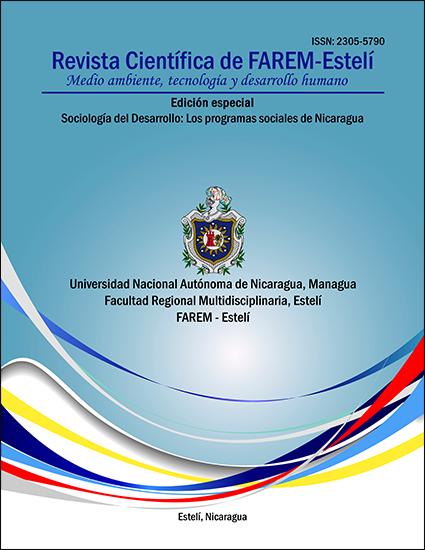Characterization of the Food Production Program “Hambre Cero” (PPA) under the National Plan for Human development of Estelí, Nicaragua
Abstract
The current study characterizes the Food Production Program better known as “Hambre Cero” in Estelí-Nicaragua city. This study was made by the uses of surveys to the program coordinators in the department and also o their beneficiaries but also through bibliography found. This program comes as the implementation of one Nutritional and Food Security politics which is justified in Nicaragua, where between 2003 and 2005 al 22% (twenty-two percent) of the population were in a sub nutrition way, according to the numbers of FAO. For this purpose the government of Reconciliation and National Unity (GRUN) created the Food Production Program. The purpose of this program on its beginning was to eradicate hunger, the chronic malnutrition, the full poverty and employment in 75,000 (Seventy-five thousand) poor rural families, by quantitative increase in production and consumption of protein foods. This is one of the most emblematic and propagandize program by the current government as it primary answer to the rural family’s needs specially women´s needs. It is presented as an empowerment program for women, because the resource´s destination is guided to the woman. The program aims to contribute, to reduce malnutrition and capitalize to families by marketing products. In the design, it is a program of transfer in the form of goods and animals that then they must repay up until 20% which will be for its own benefit because it gives to the women to organize them in cooperatives or the undertake their own businesses. Within the main results are: 70% (seventy percent) of protagonist that produce and sell excedents, they are organized in 1,681 (one thousand, six hundred-ninety five) cooperatives where there are 8,111 (eight thousand, one hundred-eleven) families involved and they have generated a revolving fund almost about one million bucks.
Keywords: Hambre Cero, Poverty, Feeding, Women, PPA, Nicaragua.

